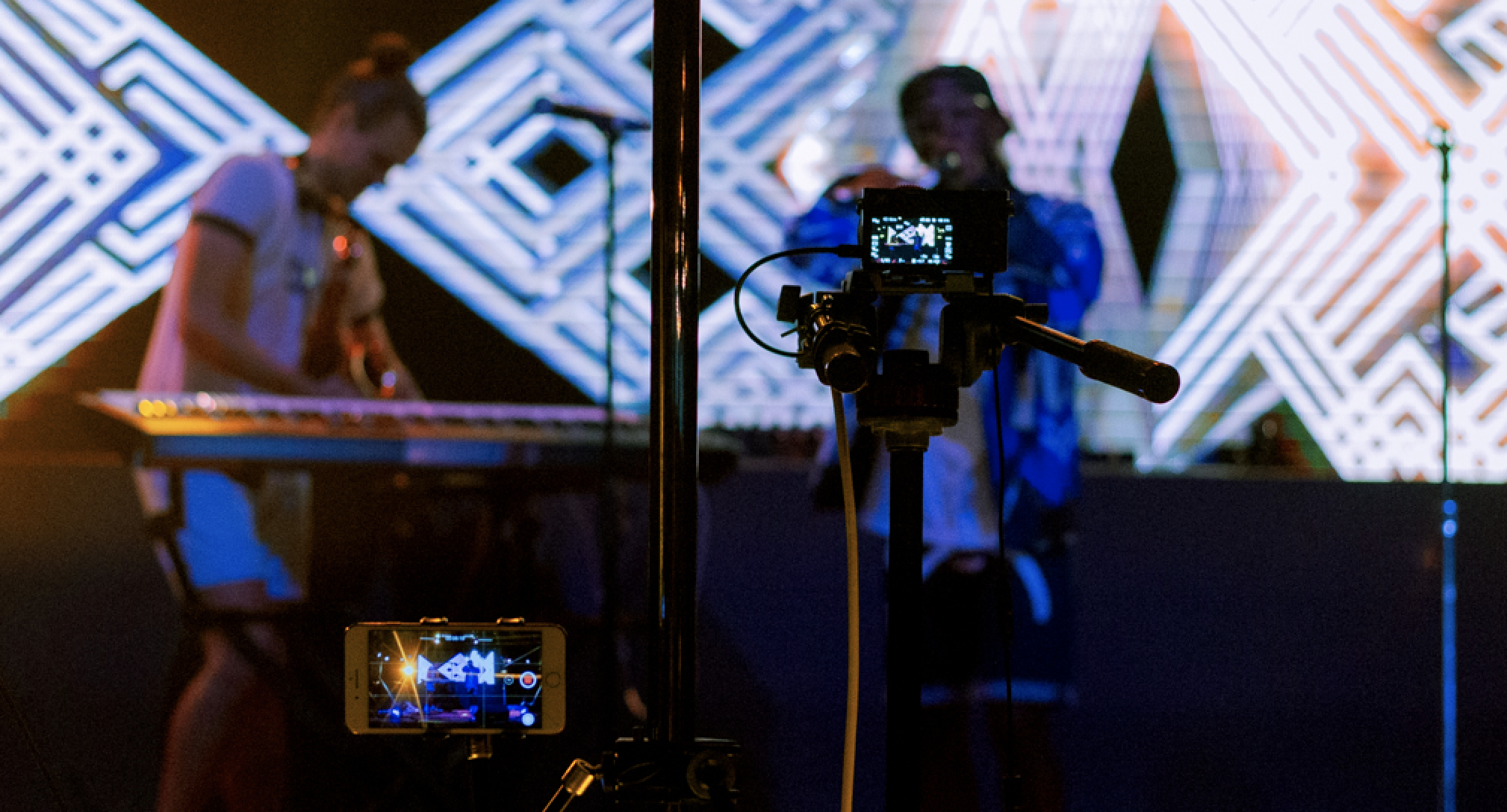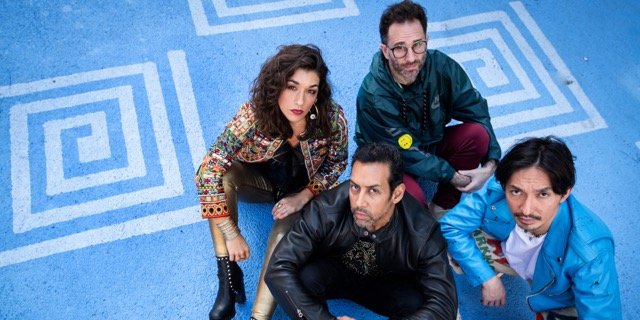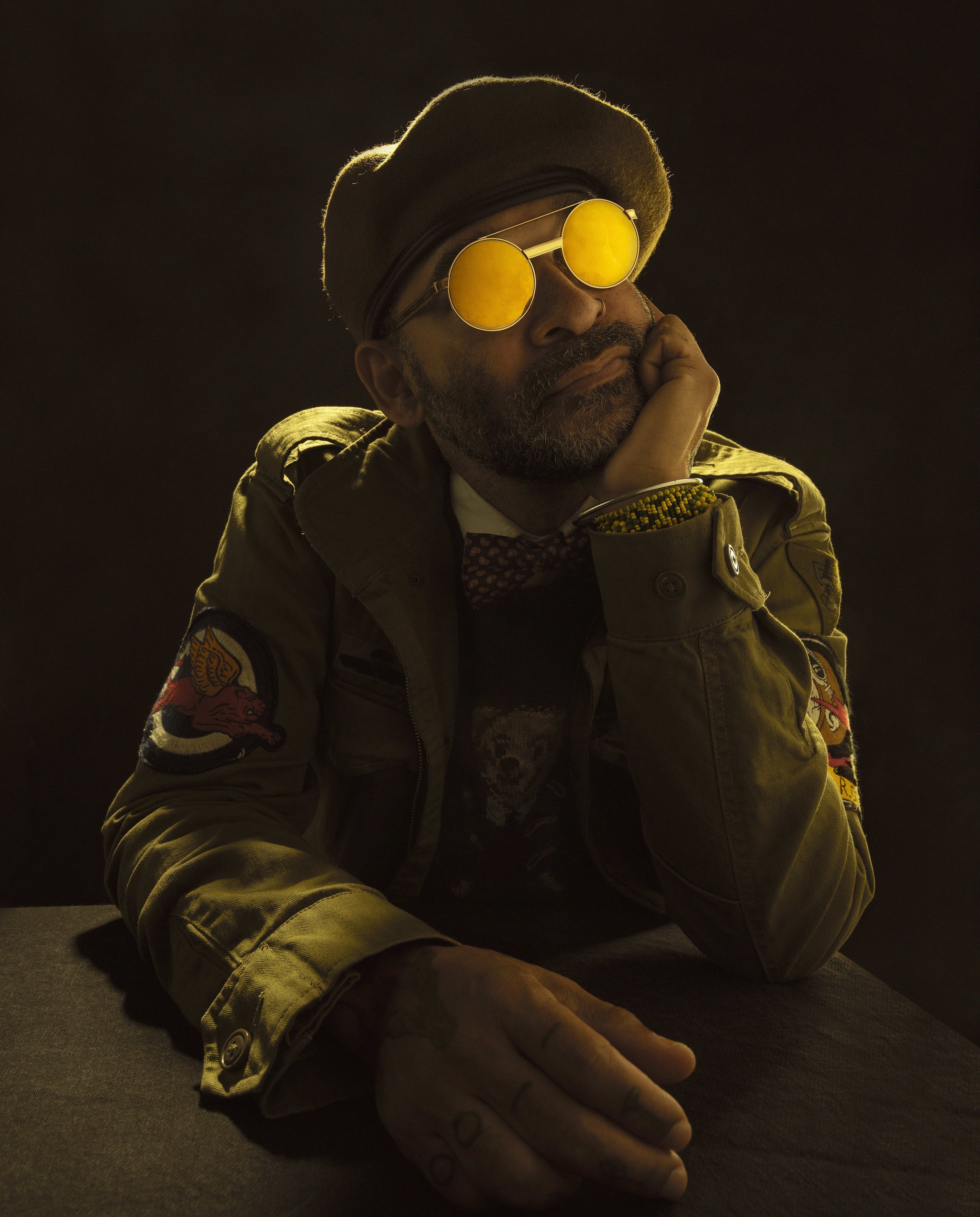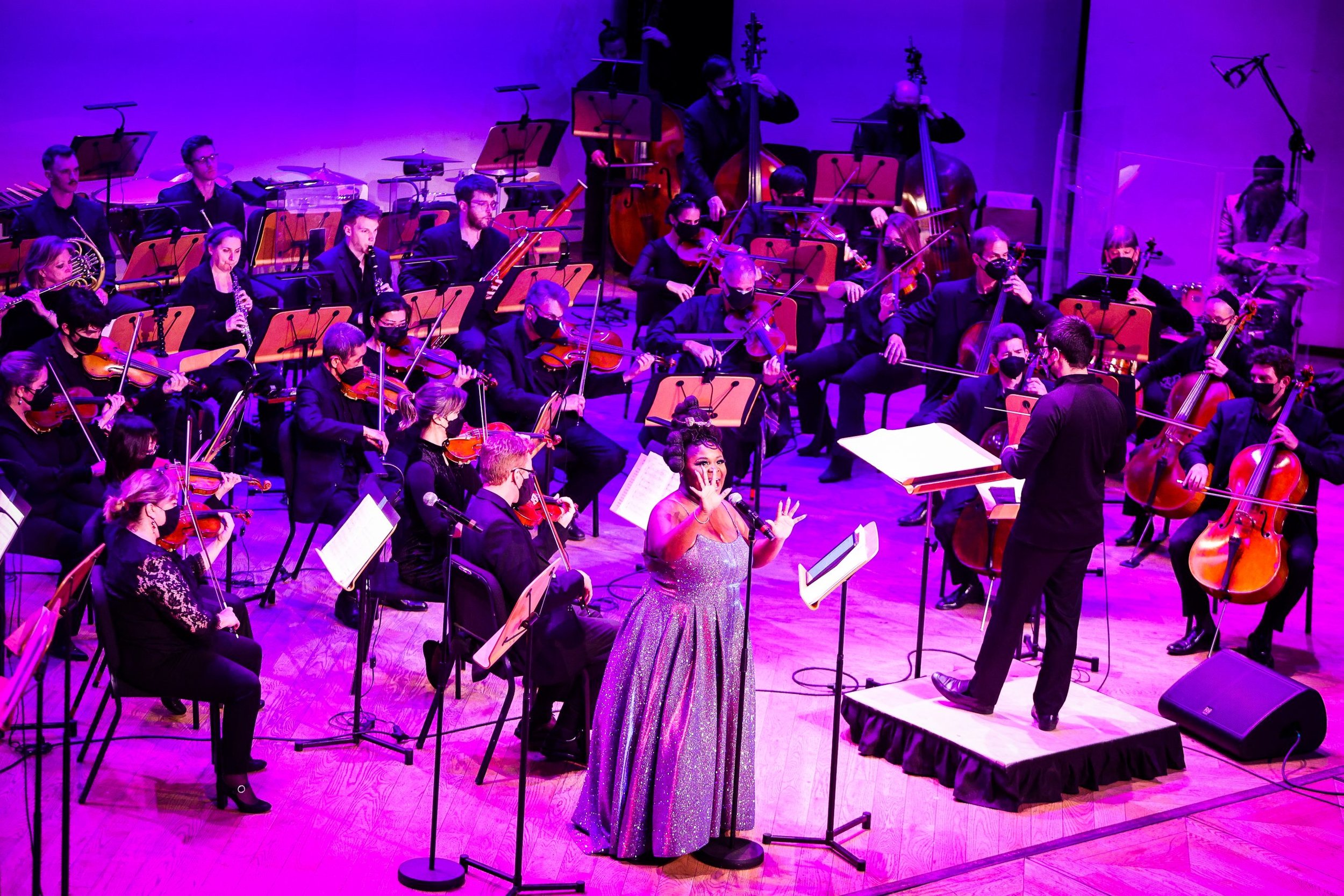The LPO Tries on Hip-Hop with Big Freedia and Alfred Banks
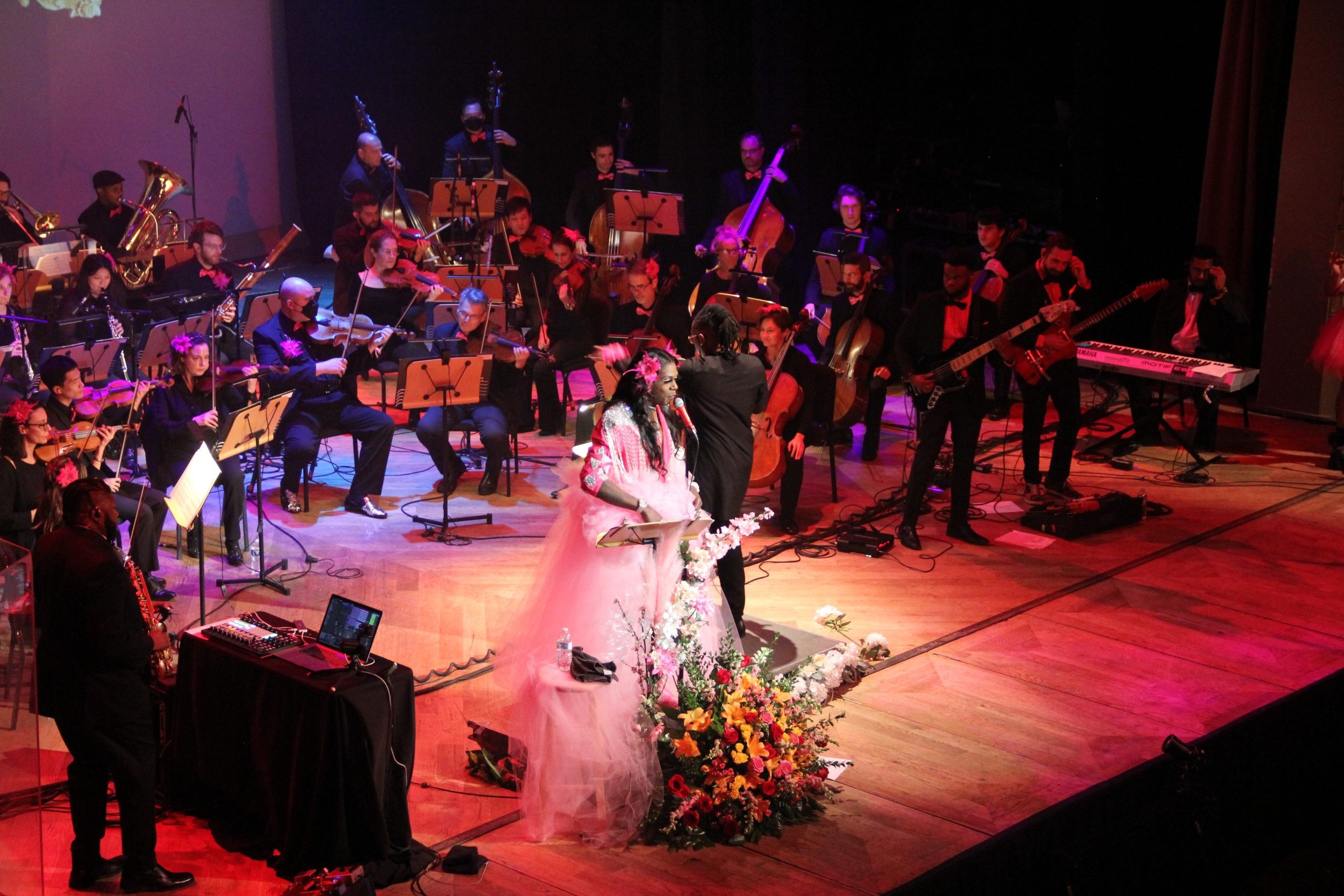
Big Freedia with the Louisiana Philharmonic Orchestra, courtesy of the LPO
In part two of our story, the Louisiana Philharmonic Orchestra works out ways to collaborate with members of New Orleans’ indie hip-hop community.
In Part 1 of this story, the Louisiana Philharmonic Orchestra decided to collaborate with Tank and the Bangas, Lost Bayou Ramblers, and other Louisiana acts as a way to reach a new audience in a musically satisfying way for the musicians and audiences alike. Today looks at hip-hop collaborations with Big Freedia and Alfred Banks. Big Freedia will perform again with the LPO on May 2 at the Orpheum, and Banks will perform as part of its “Music in the Museum” series on May 8 at Ashé Cultural Arts Center.
Perhaps the most unlikely collaboration was Big Freedia, as the distance between the LPO and not just hip-hop but bounce would seem insurmountable. There are certainly members of the orchestra who believe wholeheartedly in the traditional classical music canon, but it would seem like Big Freedia’s bounce, which is all about sub-divisions of the beat performed with Gattling gun staccato intensity, would be a reach for even the most open-minded musicians. Still, hip-hop had become part of the musical language of the 21st century and more a part of the musical language of the LPO than you might think. One member did the string arrangements for Juvenile’s Tiny Desk Concert for NPR, and another, Sixto Franco, wrote the charts for ÌFÉ’s show.
Composer Jay Weigel thinks the LPO has an easier time with this challenge than other orchestras might because “musicians here learn to follow a groove,” he says. It’s something you can’t notate, but perhaps as a function of playing in New Orleans, players here can do it. I say Follow your conductor but listen to the drum and they lock it.”
The breadth of Tank and the Bangas’ material opened up a world of reference points and musical directions that Weigel could pursue in his orchestrations for that show, but Big Freedia was a different challenge.
“It’s 90 percent rhythm,” he says of the songs. The LPO brought him to do orchestrations for Tank and the Bangas, Lost Bayou Ramblers, and Big Freedia among others, and he knew couldn’t have the strings mimicking the attack of the percussion in her tracks. At the same time, he felt it was part of his job to respect the essential characteristics of Big Freedia’s songs, so he didn’t want to transform them into something entirely different. While trying to find his way in, he made an unlikely connection: Stravinsky’s “Rite of Spring.” The common thread was “nuggets of harmony that don’t alter, but rhythmically they can expand and contract and piece together in different ways,” Weigel says. “Stravinsky was my model for her piece. He saved me on that one.”
With that in mind, he started to focus on rhythmic moments that he could turn into orchestral elements. “I started to transcribe percussive elements that were buried deep in the track and then write those rhythms out and think Okay, I’ll build a string line on this or I’ll build a brass line on that,” he says.
In their version of “Gin in My System,” the orchestra enhances the entropic spin of bounce by adding swirling strings, and any anxiety about the funk being sacrificed were definitively put to bed as Freedia’s dancers took turns showing off booty dances for the fans and orchestra alike.
The show required additional sensitivities because hip-hop has been historically the voice of young, Black America, and Weigel wanted to be sure that the orchestra and the presentation respected that. Part of that included working closely with Khris Royal, who led Big Freedia’s band. Royal attended the Berklee College of Music, so he was uniquely positioned to be the intermediary between Weigel, the band and the orchestra since he could translate the specific, technical language of formally trained musicians with the more casual, band-specific ways that groups communicate. Royal could hear and appreciate what Weigel heard and wanted to do with Freedia’s material and knew how to help him get it.
“He ran that rehearsal and show technically and artistically,” Weigel says.
Amanda Bohren, the LPO’s Director of Education & Strategic Initiatives, is proud of the collaborations. The shows have presented compelling music that put the LPO in a new light, and it introduced them to new listeners. “It’s nice to see a new audience base based on these local artists,” she says.
The current season of what the LPO calls “Music in the Museum” started last December with electro-R&B singer Dawn Richard. Composer Courtney Bryan—the LPO’s “Creative Partner” in residence at the time—helped curate the series, which moved smaller subdivisions of the orchestra into more intimate spaces with less familiar music. They presented shows at the New Orleans Museum of Art, the Ellis Marsalis Center, and the New Orleans Jazz Market among other spaces, featuring indie artists and living composers, and the outreach seemed to work. “We were seeing entirely new audiences,” Bohren says. “We found a new niche. They weren’t coming in the thousands, but it felt intimate with strong audience engagement.”
The March show with ÌFÉ (see part 1 of this story) was part of that series, as is rapper Alfred Banks’ May 8 performance at the Ashé Cultural Arts Center. Banks’ session originated not with him or the LPO but with composer and violin player Sebastian St. John, who saw Banks play at OffBeat’s Best of the Beat Awards in 2022 and heard an orchestra in his head. Days later, he sent Banks an email: Have you ever played with an orchestra? A half-hour later, Banks replied that he had been in conversations with the LPO, but that the idea fell through due to COVID. It’s not something Banks envisioned for his music, but he is a fan of Lupe Fiasco, and after seeing him perform “Go Go Gadget Flow” with the Chicago Orchestra on YouTube, Banks was open to the possibility. After that, he saw videos of Nas, Rick Ross, and Chief Keef with strings and loved them.
“The idea of strings is dope, but I never thought I’d do it,” he says.
St. John and Banks talked through ways to present Banks with orchestral backing including paying for it themselves, but the finances of that were rough. They returned to the LPO, and this time they could make it happen, but with a catch. The Music at the Museum series of collaborations is with smaller subdivisions of the LPO and not its full 67 members. That suited St. John fine as the orchestrations he heard in his head didn’t call for a battalion of instruments. He imagined a few strings and planned to go heavy on woodwinds, percussion and brass, but he had to change gears when he learned he’d be working with a strings-heavy lineup: three first violins, three second violins, two violas, two cellos, and a bass. “Strings can sound so cheesy so fast,” he worried, so his task was set. He had the choice of two more instruments and asked for a contrabassoon and a French horn.
“I don’t even know what a contrabassoon is,” Banks says, laughing.
It’s a big step for Banks. He has been resistant to performing with a live band, even when his manager said a band would help him get more gigs and more attention. “I’m a rapper, not the lead singer of a band,” he says. “And a rapper goes with a DJ.”
He’s rooted in old school rap values. “In my heart of hearts, I’m hippity-hoppity. My shit doesn’t sound like Kurtis Blow or [Big Daddy] Kane or Wu-Tang or Busta Rhymes, but I have that sentiment.” His artistic comfort zone is a beat and a soul groove, but Banks started stretching himself in SaxKixAve, his collaboration with Albert Allenback, working with a broader musical palate. Going symphonic was a big step because it involved trusting his art and credibility to a lot of people and going into a space where emcees rarely go. That kind of trust doesn’t come easily to Banks, but it’s something he’s working on.
To keep the project grounded in hip-hop, he brought in ANTWIGADEE! as DJ. ANTWIGADEE! will play between sets on Saturday, May 4 on the Congo Square Stage at Jazz Fest, and he was happy to join the project. Last October, he saw the LPO play the live score to Jordan Peele’s Get Out at the Orpheum and enjoyed it, but “I love orchestras in general,” he says.
When Banks and St. John worked through the concept, Banks floated the idea of “Twig” playing the familiar tracks from Banks’ songs. Twig preferred the idea of playing an MPC better, tapping keys tied to sounds and samples live in real time, and that made sense to Banks and St. John. That meant all the sounds on stage would be generated live, and Banks connected his idea to famed producer J. Dilla. Dilla’s live beats meant that time wasn’t always perfect on his tracks, but the songs gained an energy and humanity in the process.
“This will be the one time you’ll hear me say this, but playing the record won’t be as good as what is going to happen live,” Banks says.
During a practice run-through of SaxKixAve’s “Kaleidoscope,” St. John’s orchestration plays on his computer while Banks raps and Twig taps out the percussion samples. The combination certainly takes the song in places Banks and Allenback didn’t imagine when they wrote it, but the electronic clatter Twig generates clearly roots the piece in hip-hop. The groove is important to St. John, and he has tried to take compositional steps preserve it. Like Weigel, he noticed that the members of the orchestra can groove, but that goes against their training. He deliberately left some notes out of phrases to counter their tendency to “straighten up the sound,” as St. John puts it. He’s looking forward to rehearsal to hear how it plays, and he has a plan.
“If they square it up too much, we’ll take out some notes again.”
Twig playing his MPC works for St. John too. Not only does it maintain a key element in hip-hop’s sonic palate, but it solves a compositional problem. He had to figure out where the percussive elements were going to come from and toyed with the idea of cellists drumming on their instruments with their hands. Twig fit with St. John’s aesthetic and vision for the show. “I like more warm bodies onstage,” he says. “I think of this as Alfred Unplugged.”
For Banks, the experience has been an eye opener. He’s used to thinking of his music in very conventional ways. “The moment a song is done, in my head it’s finished,” he says. St. John’s enthusiasm and the results of the collaboration have helped him realize that the recorded version is the first one, but not necessarily the last one. “It could be interpreted in so many ways,” he realizes, and that opens the door to other potential revenue streams.
The end of ÌFÉ’s collaboration with the LPO at the New Orleans Jazz Market was a love fest. Leader Otura Mun thanked conductor Matthew Kramer, arranger Sixto Franco, and the members of the LPO. Kramer in turn thanked each member of ÌFÉ personally. The gesture is a familiar one, but it felt real-er than most. “It was really incredible working with him,” Mun says. “I felt like he truly understood and appreciated what I was doing musically and conceptually and did his best to support my vision. He championed my music and artistry, which made all of the difference in the end.” Like ANTWIGADEE!, Mun’s a fan of the LPO and had season tickets last season. He also played in orchestras as a classical percussionist before venturing into the worlds of electronic and folkloric music.
Even after the show ended, he felt gratitude toward his collaborators including Franco for his orchestrations. “He took a repeating falsetto vocal line that I had looped and moved the melody from strings to oboe to trumpets, to trombone and back to cello with a gracefulness and elegance that just about brought me to tears,” Mun says. Like Alfred Banks, the experience has helped him see more in his music than he imagined.
“I played all of the instruments and sang most of the vocals on all of my recorded music, so the melody and harmonies you hear in my music are confined to my understanding and mastery of the craft itself. Sixto is an amazing arranger and was able to take my ideas and develop them into something with a richness and depth that surpasses my musical vocabulary, supporting and lifting my voice in ways that I never imagined possible.”
Franco’s arrangements broadened Mun’s musical palate because the sampled notes triggered by his drummers reside within a single octave or limited range. The LPO raised the ceiling of melodic and harmonic possibilities by adding instruments that allowed for richer, more complex musical expressions. “It was a tremendous gift and honor to work with this organization to bring my music to life in such a beautiful way with a group of musicians and technicians that I greatly admire,” Mun says. “I treated the experience as a privilege and a once in a lifetime opportunity that I was determined to make the most of.”
ÌFÉ will perform on Wednesday, May 1 at the Music Box Village with Weedie Braimah and the Hands of Time with a string quartet from the LPO including Sixto Franco joining his band. Tickets are on sale now.
Creator of My Spilt Milk and its spin-off Christmas music website and podcast, TwelveSongsOfChristmas.com.



